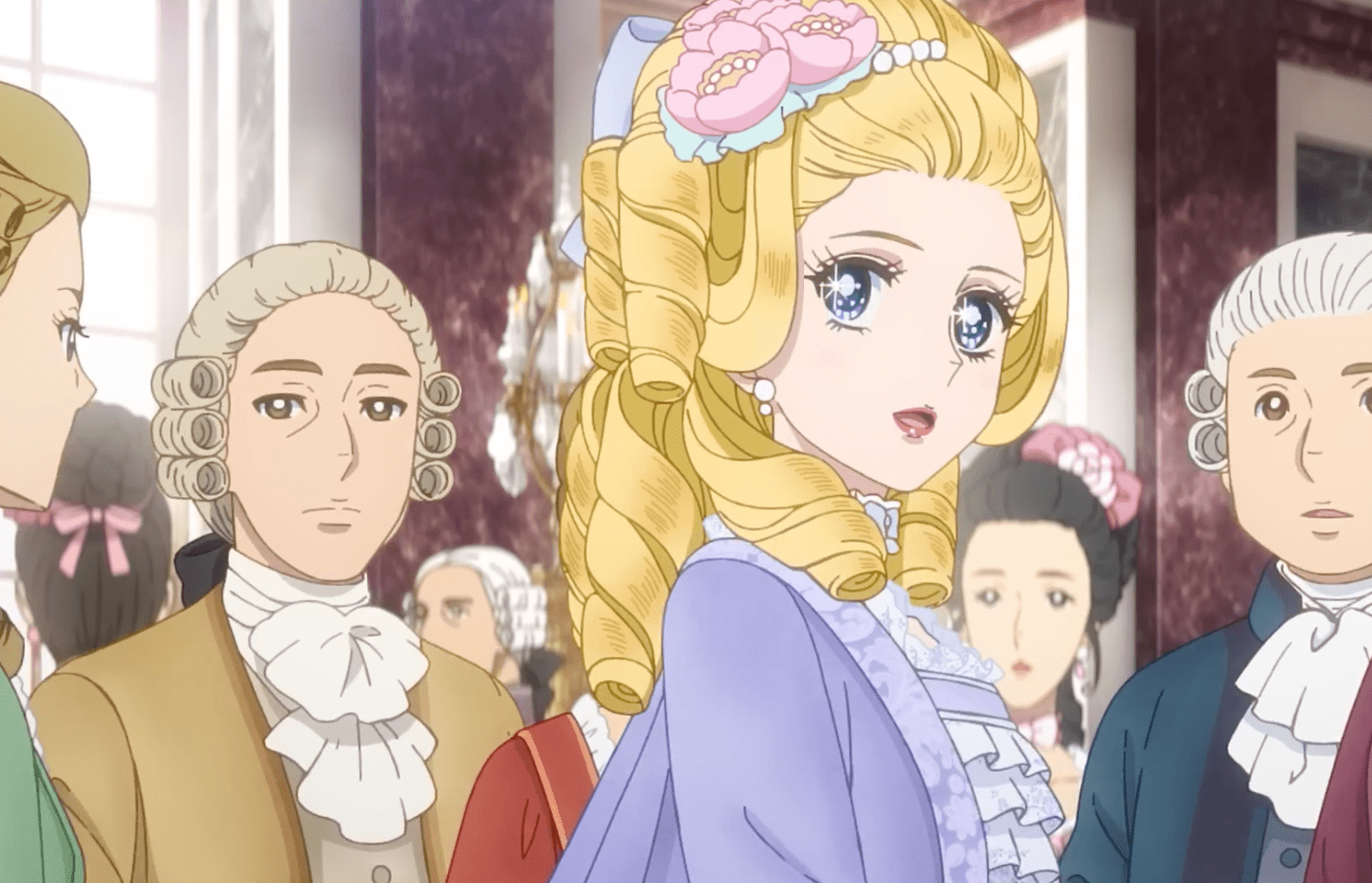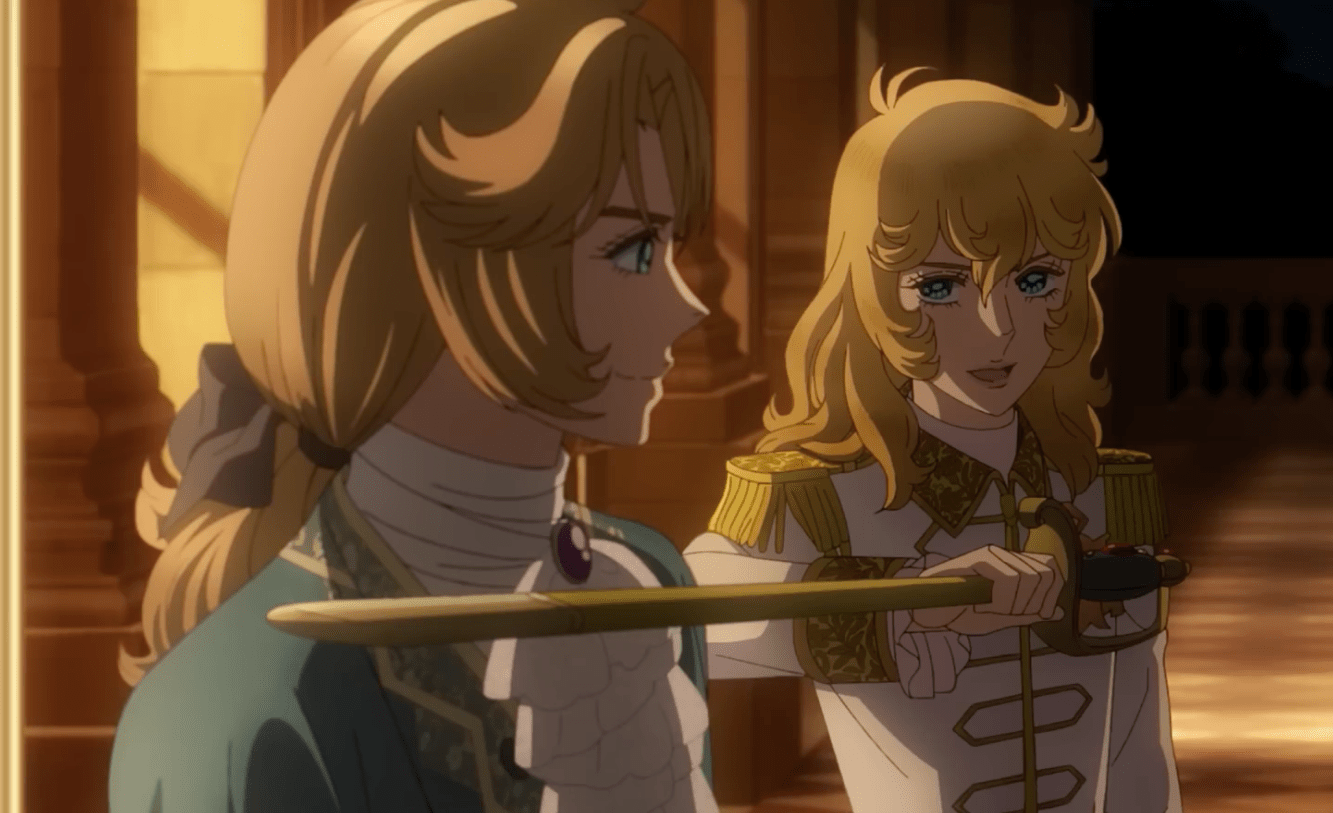Even before I fully became an anime fan, I knew about The Rose of Versailles, one of the greats of the shoujo genre. I’d seen pictures of gender-nonconforming aristocrat Oscar François de Jarjayes in her French military uniform, luxurious blond hair tumbling over her svelte shoulders. Even without knowing much about who she was, I was intrigued by her striking looks and gender ambiguity. I never read Riyoko Ikeda’s 1972 manga or watched the 1979 anime series, but it held a constant place on my perpetually growing backlog.
After the first teaser for Netflix and MAPPA’s Rose of Versailles movie, I did some preliminary research and learned that Ikeda dove into themes of revolution, sexuality, and gender, all with gorgeous art and poignant love stories woven throughout. I was excited for this new version, which would let me experience all the highs I’d heard about, but visually updated for a slicker era of anime.
But about 20 minutes into Netflix’s Rose of Versailles movie, I felt like I was missing something. Everything happens so fast, with the story rushing through character development and plot points. Also, it’s inexplicably a musical.
I wanted so desperately to feel an emotional connection to these beautifully animated characters, but this version of the story didn’t even give me a chance. Maybe if I were more familiar with the source material, this project would feel more like a greatest-hits highlight reel with some spectacular animation. But for a newcomer, it’s puzzling: I kept feeling like I’d accidentally fast-forwarded past some key moment.
[Ed. note: This review contains some setup spoilers for Netflix’s movie The Rose of Versailles.]
The Rose of Versailles asks the daring question: What if there were one really statuesque, androgynous woman in the otherwise all-male French royal guard during the rococo era in the latter half of the 18th century, who is also besties with Marie Antoinette? Commander Oscar François de Jarjayes’ father desperately wanted a son, and raised his daughter with all the privileges of a man. There’s no secrecy about her identity: Everyone in Versailles knows she’s a woman, and she faces little opposition to her role. As a teenager, she’s put in charge of protecting the young Marie Antoinette, freshly sent over from Austria to marry France’s crown prince.
The manga follows the lives of these two women as they grow from teenagers into adults, grappling with the expectations of being female and contending with France’s increasing societal unrest. Oscar also shares a close friendship with her childhood friend and attendant André, while Marie falls for visiting Swedish count von Fersen. Eventually, Oscar starts to sympathize with the peasants and becomes a key figure in the French Revolution. And, well, we know how it ends for Marie.
The movie’s animation is nothing short of breathtaking, a splendorous update to the 1980s anime series. In addition to the spectacular character designs, there’s a flurry of added effects. Shoujo manga and anime often employ flowers blossoming around frames and borders, but Rose of Versailles takes it further by embellishing frames with rococo flourishes. This is especially true in the musical sequences, which play out as a montage of stylized imagery while one or two major characters croon in voice-over.
However, as beautiful as these sequences are, the movie has so many of them. I admit, they’re an effective way to show time passing and feelings changing. But they end up weakening the actual emotional scenes, because they’re not a true substitute for character development. From a single brief musical sequence, I’m supposed to surmise that Marie and Oscar have grown close, but we never actually see them interacting in any meaningful way. This undermines subsequent scenes that stress their relationship, because I just don’t buy that they’re even close.
Some of the emotional scenes almost moved me, but I had to pull up the manga and anime adaptations’ Wikipedia pages and quickly read the episode and chapter summaries to figure out what important plot points were glossed over in the most recent musical montage. The only relationship I fully bought by the movie’s end was André and Oscar’s friendship and slow-burn romance, simply because they have the most interaction beyond the musical sequences.
In the 1979 anime series, it takes nine episodes for Marie and her husband to become king and queen of France. In this movie, it happens within the first 20 minutes. I spent the entire movie wanting more, but also feeling like the story was dragging, because I just wasn’t invested in many of the plot points I was seeing. I can see how a recap movie with beautiful animation and song sequences would appeal to a longtime fan of this franchise, but for someone new to the story, it just feels like a frustrating hint of something even better. The good news is that something better exists — and now I’m more motivated than ever to pick up that original manga and dive in.
The Rose of Versailles is streaming on Netflix now. The 1979 anime adaptation is streaming on Pluto TV.
Content shared from www.polygon.com.



